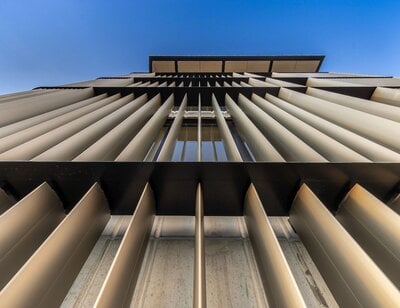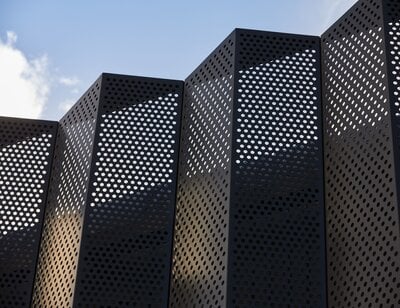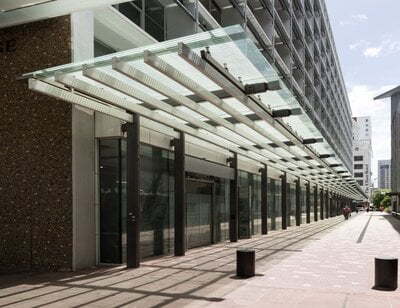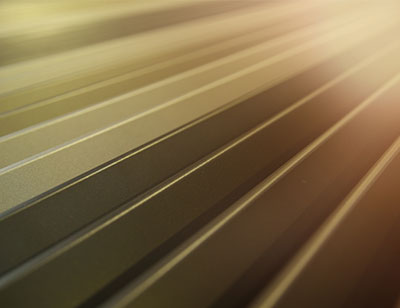Summer in Great Britain has been warmer than usual. The sunshine, plentiful enough to see parks bursting with sun-bathing and sun-loving Brits, has brought it with an unexpected downside. Namely, travel delays. The culprit is thermal expansion and it's been wreaking havoc with the railways, forcing trains to slow down for fear of the rains buckling in the heat and causing derailment.
The root cause of the issue is the continued gradual climbing of temperatures as the earth heats up. In the UK, the steel in the rains is pre-stressed to meet temperatures of 27℃. Summer temperatures have exceeded that and thermal expansion has come into play.
What does it mean for us here in New Zealand? The outlook suggests that we're getting warmer and the summers will be drier. The small, incremental shift of the mercury rising will bring issues and we're frequently being asked if we allow for thermal expansion in our louvre designs. The answer is, we're not too concerned about it. That might seem a little bias, so we should explain exactly how and why we've arrived at this viewpoint.
What is Thermal Expansion?
Every material consists of a number of molecules. How densely they are crammed together is dependent on the material, with Osmium being the most dense on earth, at 22.59g/cm3. As the temperature rises, the molecules are supplied with heat energy which is then converted into kinetic energy. So they begin to move around a bit. The higher the kinetic energy, the more movement and the greater distance molecules can be apart from each other. When this happens, we get what's known as thermal expansion. There are 2 main types; volumetric and linear.
Volumetric expansion is three dimensional and occurs if a material is isotropic (i.e. has the same properties in all directions). The expansion is uniform.
With linear expression, the growth is one dimensional. That is, if the length is much greater than the width, then the expansion will be observed along the length of the material. Returning to the example of the railway tracks, during extreme summer heat, the expansion could be as high as 48cm over every 1km of track. This is enough to cause a buckle (or bend) in the tracks and increase the risk of derailment.
How Much Thermal Expansion Should We Expect with Aluminium?
The coefficient for the thermal expansion of aluminium is taking as 0.000023/℃ in AS/NZS1664. Which means the following formula needs to be applied to calculate thermal movement:
Length (mm) x 0.000023 x temperature change (℃) = thermal movement (mm)
So a 4m length of aluminium, subjected to a temperature change of 40℃ would increase in length by 3.68mm. As shown in the calculation below:
4000 x 0.000023 x 40 = 3.68mm
The important thing to note is the temperature change is not the air temperature but the metal temperature. This might be as high as 20℃ higher than the air temperature depending on the colour. Black has Light Reflectance Value (LRV) of 0%. So darkly coloured power coated aluminium will have a much higher surface temperature than lightly coloured powder coated aluminium, with white being at the opposite end of the scale with a LRV of 100%.
What this means is that for something like a 100mm long kitchen drawer handle which will never experience a temperature change for more than 10℃, then expansion will never be an issue. But for long length of material outside and in direct sunlight, you may need to take action. This is why, in an attempt to prevent railway lines buckling, sections of the track in Great Britain are painted white.
Consequences of Thermal Movement
There is an inevitability to thermal movement. You can't 'work around' science but you can allow for it in design. Returning once more to the rail example, mitigation efforts include having gaps in the track and the aforementioned painting of specific sections in white. Road bridges may have an expansion joint, while heating pipelines will have expansion loops.
For louvres and other forms of facade screening, we have to consider the following:
- Will expansion shear bolts securing the facade in place?
- Will expansion cause permanent damage to something else?
- Will expansion compromise the integrity of a weathertight envelope?
- If there is no room for expansion - where will it go? It has to go somewhere and will have some effect - it's critical to work out where that will be.
- If thermal expansion were to compromise the integrity of structural fixings, what are the consequences of failure?
So Why Aren't We Too Concerned?
For the most part, louvres and other forms of facade screening are not part of the weathertight envelope like roofing, cladding or windows. They tend to be wholly exterior elements with space to move, with the advantage of being effectively air cooled thanks to good airflow all around them, reducing the temperature change.
This means most louvres and facades can be located in areas of extreme temperature variation and powder coated in black, without any immediate problems. This is not to say they'll be free from issue, nor does it mean a lack of concern equates to ignoring thermal expansion completely. We still need to be cognisant when:
- Long louvres are fixed tight between structural elements with no flex. We've seen louvres (we hasten to add - not our louvres) which have been fitted into an opening in precast concrete with no tolerance at the ends. Just a few millimetres or longitudinal expansion translated to a significant amount of lateral buckling and eventually, a permanent deformation. To make matters worse, they were a dark colour and could only have been fitted on a cold day.
- Long lengths of aluminium are directly fixed to a different material, such as the aforementioned precast concrete, or even steel. This can lead to expansion forces shearing the heads off the fasteners, the consequences of which are potentially catastrophic.
For many of our standard louvres, expansion has already been taken into account. For example, open-ended louvre installations with rear mounting details, such as our clasp bracket system, are designed to tolerate a certain amount of lateral movement.
This is the other reason we're not too concerned about thermal expansion - we've already taken it into consideration and prepared for it. It's another risk we mitigate against, like aeroacoustics flutter and possible wind damage.
Overall, is thermal expansion worth getting heated about? It would be if you weren't prepared for it or your area of speciality is highly likely to be affected. For us, it's a risk easily mitigated against by applying the known principles. You do have to both know and apply them thought.








